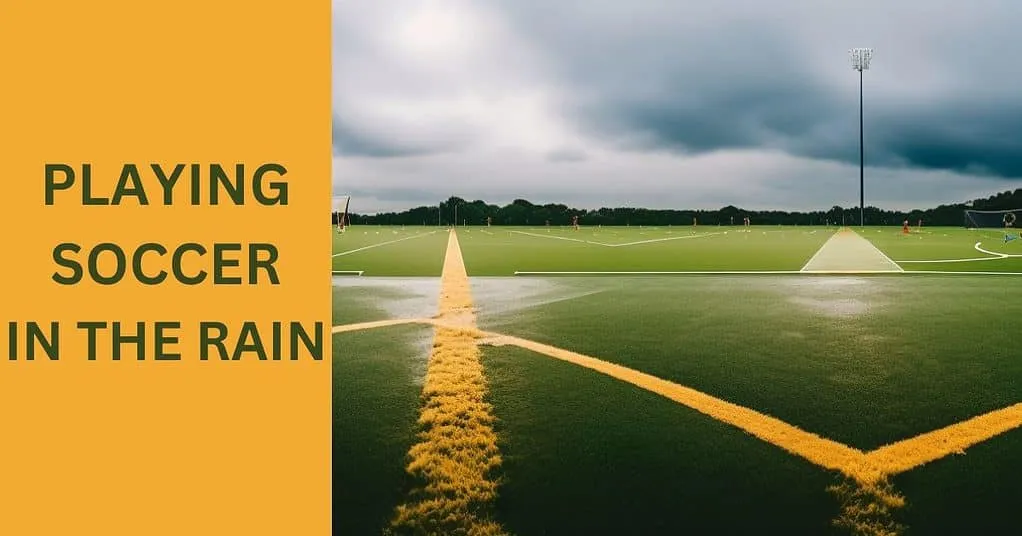The question of whether metal studs are allowed in soccer continues to spark considerable debate among players, coaches, and fans.
It’s a topic that resonates deeply within the sport, transcending all levels from the grassroots to the most elite professional leagues.
The issue not only affects player performance and safety but also penetrates deeper layers of the sport, influencing the design of sports equipment and the formulation of game regulations.
As soccer continues to evolve, this debate remains at the forefront of discussions, affecting significant aspects of the game.
Historical Use of Metal Studs in Soccer
Metal studs have been an integral part of soccer footwear for many decades. Historically, these studs were necessary for providing players with much-needed grip on the pitch, especially during unfavorable weather conditions.
As the sport evolved, so did the rules and technology associated with it. Today, a diverse range of materials, not limited to metal, are used in manufacturing studs, each offering distinct benefits and drawbacks.

As the game continues to innovate and change, the place of metal studs in soccer footwear remains a subject of much debate.
Pros of Metal Studs in Soccer
Metal studs offer several advantages, the most notable being the enhanced grip they provide on the field. On muddy or wet pitches, metal studs can significantly improve player performance by preventing slips and falls, thus enabling better ball control and speed.
Moreover, their durability surpasses that of their plastic counterparts, making them a preferred choice for players seeking long-term use. However, despite these benefits, the use of metal studs in soccer is not without controversy.
Cons of Metal Studs in Soccer
While metal studs offer undeniable advantages, they also present several drawbacks. The most glaring is their potential risk to player safety.
Their hardness and sharpness can lead to more severe injuries during tackles, raising questions about their suitability for the sport.
Additionally, metal studs can cause considerable damage to the pitch, leading to higher maintenance costs and poorer playing conditions over time.
Balancing the pros and cons of metal studs is therefore a crucial aspect of the ongoing debate.
Safety Concerns: Are Metal Studs Dangerous?
Safety concerns are at the heart of the debate around metal studs in soccer. While their superior grip and durability make them appealing to some players, others highlight the potential for severe injuries during game play.

The hardness of metal studs can lead to more dangerous tackles, increasing the risk of cuts, bruises, and even fractures. As a result, many players, coaches, and governing bodies are reevaluating the use of metal studs, seeking alternatives that can balance safety with performance.
Legality: Are Metal Studs Allowed in Professional Leagues?
Many professional leagues and associations have established specific guidelines regarding the types of shoes players can use.
Some have outright banned metal studs, while others permit their use under certain conditions. The legality of metal studs is therefore highly dependent on the specific rules of each league or tournament.
As such, players and teams need to stay updated on the latest regulations to ensure compliance.
Players’ Views on Metal Studs
Among players, views on the use of metal studs are often divided. Some argue that the increased grip and durability provided by metal studs are invaluable, particularly during matches played in adverse conditions.
Others, however, prioritize safety above all else, advocating for the use of softer materials that reduce the risk of injury. Such varied perspectives further fuel the debate, necessitating a thoughtful discussion that considers all aspects of the issue.
Influence of Metal Studs on Gameplay
The type of studs used in soccer can significantly influence gameplay. Metal studs, with their enhanced grip, can alter a player’s speed, agility, and control over the ball,
especially under adverse weather conditions. Conversely, the potential damage they can inflict on the pitch may also negatively impact the game.
Therefore, the choice between metal studs and their alternatives can profoundly affect not only individual player performance but also the overall dynamics of the game.
Alternatives to Metal Studs
In the face of the controversy surrounding metal studs, alternatives such as plastic or rubber studs have gained popularity.
These materials, while offering less grip than metal, are believed to present a lower risk of injury during tackles. In addition, they are less damaging to the pitch.
As research and technology continue to advance, manufacturers are constantly developing new materials and designs to balance performance and safety in soccer footwear.
Final Thoughts: The Future of Metal Studs in Soccer
The future of metal studs in soccer remains uncertain. As the sport continues to evolve, so too does the debate surrounding its use.
With advancements in technology, shifts in player attitudes, and changes in governing regulations, the role of metal studs in soccer is likely to continue evolving.
While their benefits are clear, the concerns associated with their use cannot be ignored. As such, the path forward lies in fostering open discussions, conducting further research, and innovating footwear designs that can enhance performance while prioritizing player safety.
Conclusion:
The question of metal studs’ allowance in soccer weaves a complex tapestry interlinked with safety, performance, and evolving game regulations.
From their historical use to their potential advantages, the debate is set against the backdrop of an ever-evolving sport that continues to adapt and innovate.
The safety concerns and pitch preservation issues that arise with the use of metal studs necessitate a thoughtful balance.
As soccer steps into the future, the role and acceptance of metal studs will continue to be a riveting point of discussion for all enthusiasts of the beautiful game.


